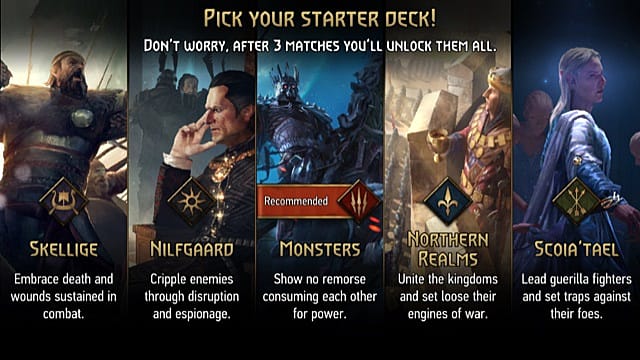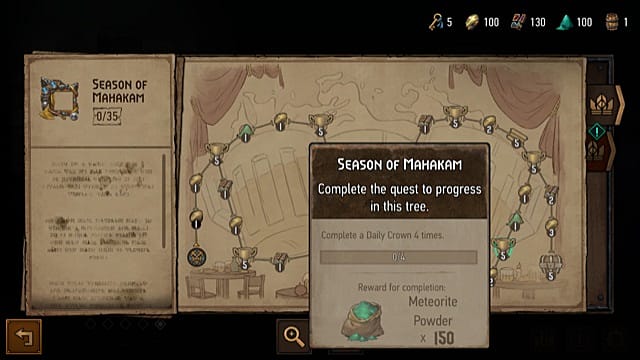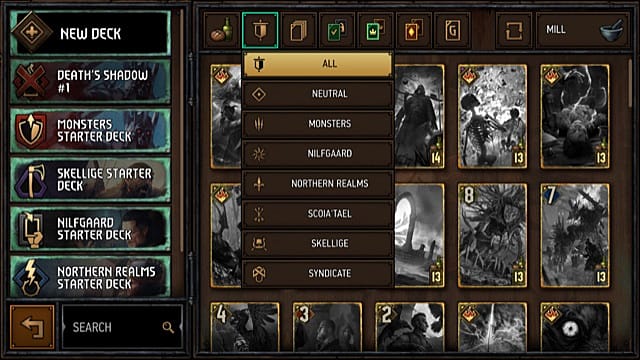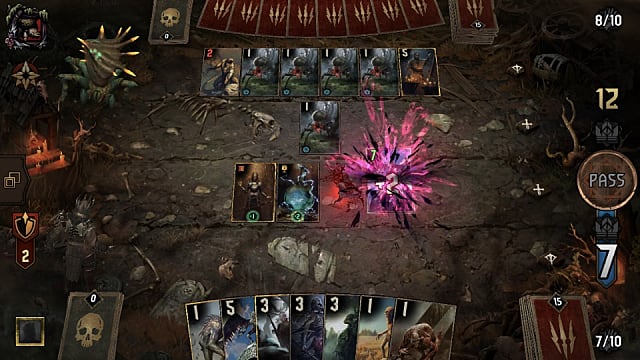

Forget about hot tub Geralt of Rivia cosplay or the weird nude card collections from the early titles. One of the most enduring legacies of The Witcher video game series will undoubtedly be Gwent.
First introduced in The Witcher 3 and since released as a heavily modified standalone CCG game, Gwent has undergone a number of major changes since 2015, including finally landing on iOS devices.
With the Netflix live-action rendition of the franchise starring Henry Cavill about to arrive, Gwent is likely to see a big boost in its player base. In other words, now is the time to jump in for some strategic battles — if you can handle the small screen layout.
What You Need To Know About Gwent iOS
Gwent on iOS is very, very similar to its PC and console versions, so if you've already played a couple of hundred matches there, you can skip this part and go down to the next section. On the other hand, if this is your first foray into the game, stick around to find out why you should play Gwent over any other card game.
First up, besides pulling from The Witcher lore, the art is simply top-notch and the battlefield animations are extremely slick for a free-to-play CCG. On the gameplay front, Gwent is much more tactical than you'd expect. It requires you make a major paradigm shift if you're used to Hearthstone or Magic: The Gathering.
The layout may look familiar, with the positioning of the library, graveyard, and so on, but nearly everything else is different. Rather than aiming to whittle away an opponent's health, you are instead trying to get the most points with a limited deck pool over a series of three matches.
Rounds of Gwent are significantly less random than other CCGs, and there's no waiting to generate resources to put out your biggest cards. As soon as a card is in your hand, you can immediately play it on the battlefield. However, only one card can be played a turn.
The twist is that you need to win two out of three rounds to take the whole match, but there's a limited pool of cards available between those three rounds.

Imitating the notion of "overextending your lines" in real-world mass combat, going all-in for an overwhelming win in a single match isn't a great idea. It's often more advantageous to lose the first round because that means you'll have more cards available in the later rounds. It also means you can get a sense of the opponent's deck build and overall strategy in the process.
Of course, that strategy will change based on which of the factions you are using for your current deck, like Monsters or Nilfgaard. That's where some knowledge of Magic-style combos really helps out. If you know the basic idea of big red bruisers, black creatures that consume each other or get stronger based on what's in your graveyard, and so on, then you'll have a step on the newbies.
However, Gwent, especially in its mobile form, is all about quickly getting into multiplayer matches. Although you can endlessly play practice rounds against random AI opponents, there's no actual single-player story campaign replete with rewards for beating themed opponents. For that experience, you've got to buy the Thronebreaker game, which uses the Gwent cards but is otherwise its own standalone title.
Now that you know how it works, let's take a look at how the game changes when ported to a mobile setting.
How Gwent Differs On iOS

CD Projekt Red has touted this iOS port as "The Witcher card game in its best form," and while it is better in some ways, the GOG version is superior.
First and foremost, it's important to note that Gwent drains my iPhone battery noticeably faster than either Mario Kart Tour or Pocket Mortys. The ability to play on the go is the whole reason Gwent exists on mobile. That isn't a huge selling point if I have to be plugged in most of the time. And that's before getting into some of the issues of squishing the game down into an 8-inch screen.
Most of the redesigned areas are way, way too crowded, to the point CD Projekt literally includes a magnifying glass option. The deck builder is an extremely cluttered area, and the various reward skill trees are all a real pain to navigate on a small phone screen.
Being able to tap and hold to see what hero ability is currently equipped is difficult, a feeling worsened by how easy it is to do on the PC version. It will also likely take you a few taps to properly pull up your graveyard. In a fast-paced multiplayer game where the clock is ticking, that can be a problem.
That doesn't mean there aren't any positives. The tap and drag and double-tap mechanics work really well on iPhone, and they have are a smooth transition from clicking with a mouse.
Thankfully, you can also hook up to your GOG account and share progress with the PC version, which is really nice for existing players who have already spent money or sunk a lot of time into the game.
While the base gameplay is identical, some of the visuals and menus have changed with the condensed viewing area. Now you have to tap and hold to see card info during a match.
The iOS card view layout during a match is actually better than the PC version, with each keyword or game concept highlighted more effectively in the iOS version. Those red keywords above are much cleaner and easier to view, which is a big help to newbies.
The Bottom Line

Pros:
- It's Gwent on the go!
- Same great art, mechanics, music, and animations as the PC version
- Card description layout is actually cleaner than the original
Cons:
- The cluttered UI makes some parts of the battlefield difficult to tap
- The deck builder and reward trees are extremely cluttered and don't work as well on a small phone screen
The base version of Gwent is easily a solid 8/10 or 9/10 CCG. Because of some of the UI constraints found in the iOS version, as well as how fast the app drains your battery, the iOS version isn't quite as great.
That being said, it's great to have the option to play a few rounds on your lunch break without having to boot up a computer or go home and turn on your Xbox.
It seems like iOS is just the beginning of the mobile ports as well. While it's weird that Gwent hasn't hit the Switch or Android yet, the latter will get some love in early 2020.

0 comments:
Post a Comment